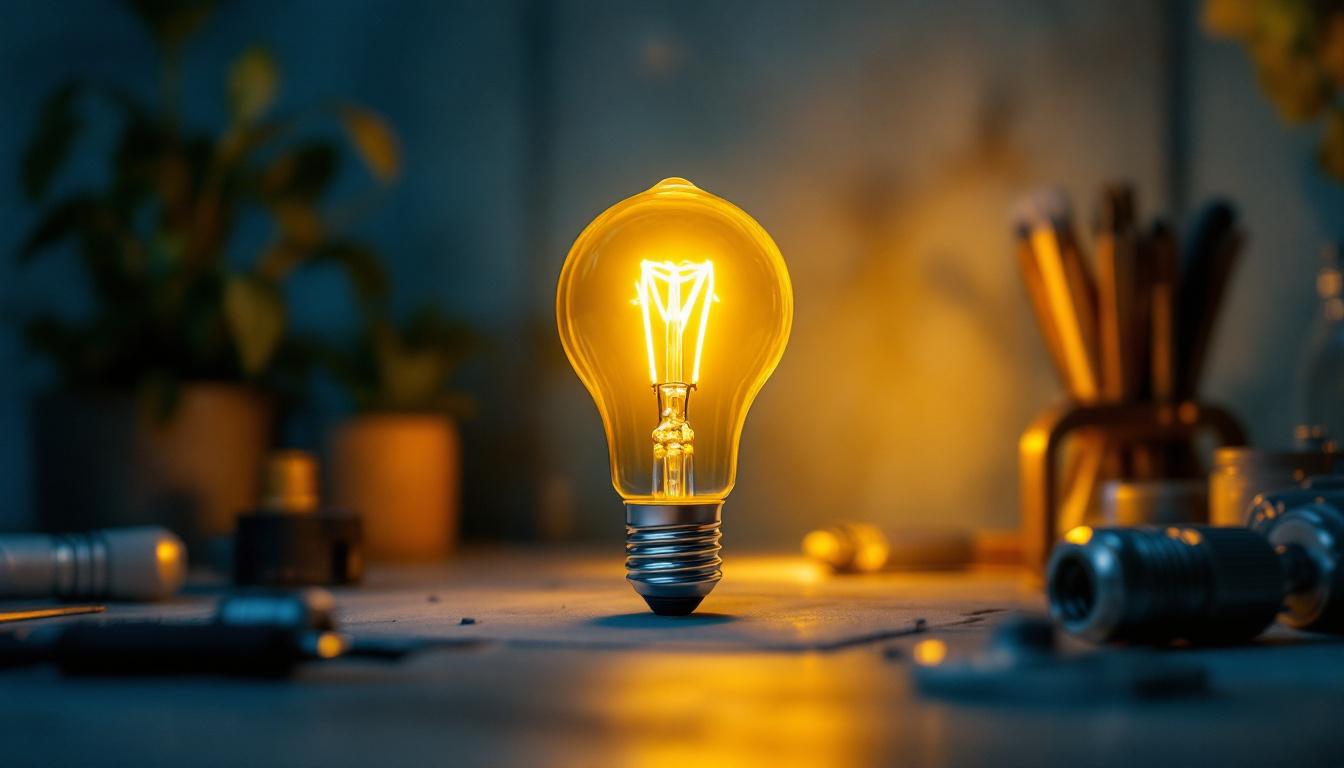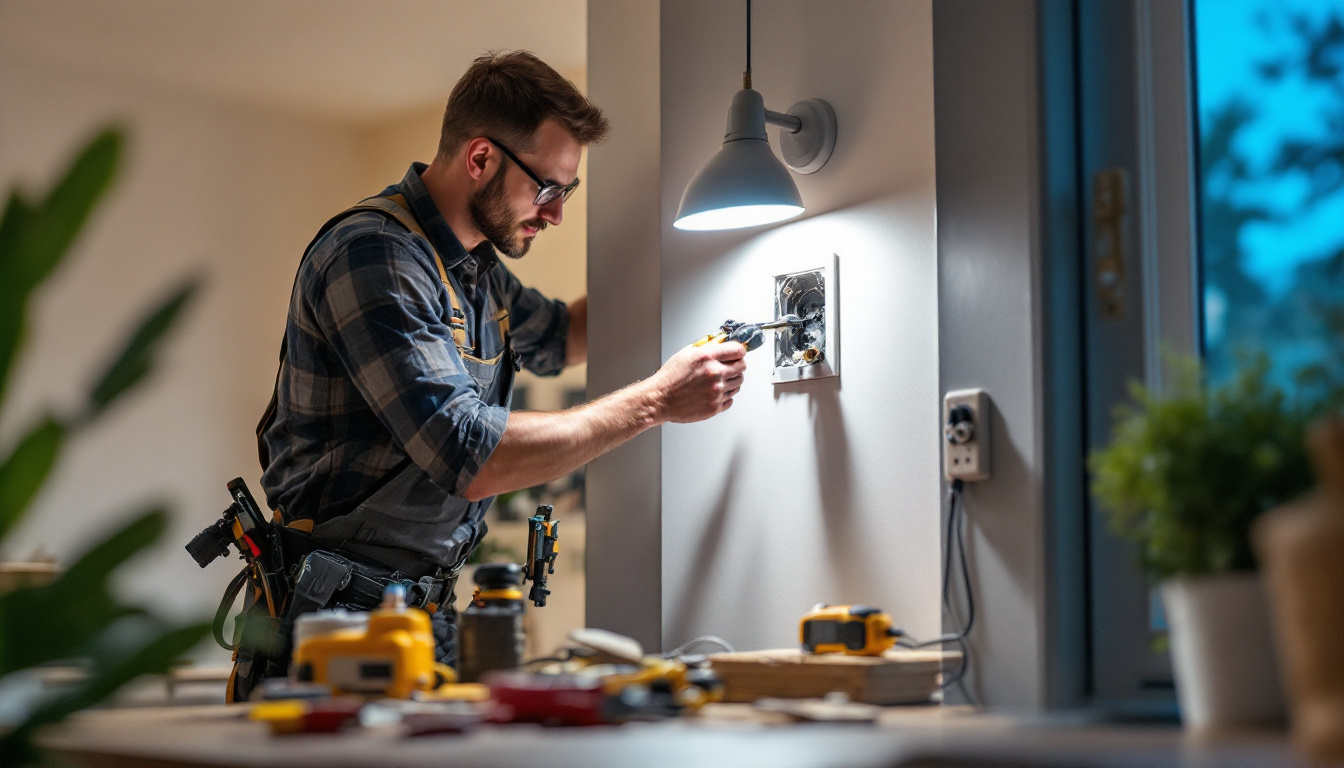
Motion detector sensor lights have revolutionized the way lighting contractors approach outdoor and indoor illumination. These innovative devices not only enhance security but also contribute to energy efficiency and convenience. As a lighting contractor, understanding the intricacies of motion detector sensor lights is essential for providing clients with the best solutions tailored to their needs.
This guide will delve into the various aspects of motion detector sensor lights, covering their types, installation processes, and best practices for maximizing their effectiveness. By the end, lighting contractors will be equipped with the knowledge necessary to recommend and install these systems confidently.
One of the most appealing features of motion detector sensor lights is their ability to provide illumination only when needed, which significantly reduces energy consumption. This is particularly beneficial for clients who are environmentally conscious or looking to lower their utility bills. Furthermore, many modern motion sensor lights come equipped with adjustable sensitivity settings and timers, allowing for customization based on the specific environment and user preferences. For example, in a residential setting, homeowners may prefer a shorter duration of light activation for pathways, while a commercial property might require longer illumination for parking lots.
In addition to their energy-saving capabilities, motion detector sensor lights play a crucial role in enhancing safety and security. By illuminating dark areas when motion is detected, these lights can deter potential intruders and provide peace of mind for homeowners and business owners alike. Moreover, advancements in technology have led to the development of smart motion sensor lights that can be integrated with home automation systems. This allows users to control their lighting remotely, receive alerts when motion is detected, and even monitor their property through connected cameras, further enhancing the security features of these systems.
At the core of motion detector sensor lights is the technology that enables them to detect movement and respond accordingly. This section will explore the different types of motion detection technologies available in the market.
Passive Infrared (PIR) sensors are among the most common types of motion detectors used in lighting systems. They work by detecting changes in infrared radiation emitted by objects within their field of view. When a warm body, such as a human or animal, moves across the sensor’s path, the sensor activates the light.
PIR sensors are ideal for outdoor applications due to their ability to cover large areas. However, they can be less effective in environments with frequent temperature changes, as they may trigger false alarms.
Ultrasonic sensors utilize sound waves to detect motion. These sensors emit ultrasonic waves and measure the time it takes for the waves to bounce back after hitting an object. If there is a change in the return time, the sensor interprets it as movement and activates the light.
These sensors are particularly effective in environments where PIR sensors may struggle, such as in areas with obstacles or where temperature fluctuations are common. However, they can be more expensive and may require more complex installation.
For enhanced reliability, dual technology sensors combine PIR and ultrasonic technologies. This combination allows for greater accuracy in detecting motion while minimizing false alarms. By requiring both technologies to trigger the light, these sensors provide a more robust solution for various applications.
While dual technology sensors can be more costly, their effectiveness makes them a worthwhile investment for lighting contractors looking to provide high-quality solutions to clients.
Understanding the benefits of motion detector sensor lights is crucial for lighting contractors aiming to sell these products to clients. The advantages extend beyond mere convenience, encompassing security, energy efficiency, and enhanced user experience.
One of the primary reasons clients opt for motion detector sensor lights is the added layer of security they provide. By illuminating dark areas when motion is detected, these lights can deter potential intruders and enhance the safety of residential and commercial properties.
Lighting contractors can emphasize that well-placed motion sensor lights can significantly reduce the risk of break-ins, making them an essential component of any security system.
Motion detector sensor lights are designed to operate only when needed, which leads to substantial energy savings. Unlike traditional lighting systems that remain on for extended periods, motion sensors ensure that lights are activated only when movement is detected.
This energy-efficient operation not only reduces electricity bills for clients but also contributes to a more sustainable environment. Lighting contractors can highlight these benefits when discussing options with clients who are environmentally conscious or looking to cut costs.
In addition to security and energy savings, motion detector sensor lights offer unparalleled convenience. Clients can enjoy the comfort of having lights automatically turn on when they approach, eliminating the need to fumble for switches in the dark.
This feature is particularly beneficial for outdoor areas such as driveways, pathways, and entrances, where visibility is crucial. For contractors, promoting the convenience aspect can help in closing sales and ensuring customer satisfaction.
Proper installation is vital to the effectiveness of motion detector sensor lights. Lighting contractors must consider various factors to ensure optimal performance and client satisfaction.
The placement of motion sensor lights plays a crucial role in their effectiveness. Contractors should assess the area to determine the best locations for installation. Common areas include entrances, driveways, garages, and backyards.
When determining placement, it is essential to consider the sensor’s field of view and the potential for obstructions. For example, placing sensors too close to walls or bushes can hinder their ability to detect motion accurately.
Installing motion sensors at the correct height and angle is equally important. Typically, sensors should be mounted between 6 to 10 feet above the ground for optimal detection. The angle of the sensor should also be adjusted to cover the desired area while minimizing blind spots.
Contractors should conduct a thorough assessment of the environment to ensure that the lights will function as intended, providing adequate coverage without unnecessary false activations.
Depending on the type of motion detector sensor light, contractors may need to consider wiring and power supply options. Battery-operated models offer easy installation without the need for complex wiring, while hardwired systems may provide more reliable performance but require more extensive installation work.
Understanding the electrical requirements and ensuring compliance with local codes is crucial for a successful installation. Contractors should also educate clients about the maintenance needs associated with different power supply options.
Dust, dirt, and debris can accumulate on motion sensors, impairing their ability to detect movement. Regular cleaning of the sensor lens and surrounding area is crucial for maintaining optimal performance. Contractors can recommend using a soft cloth and mild cleaning solution to avoid damaging the sensor.
Educating clients on the importance of keeping the sensors clean will help them avoid unnecessary malfunctions and ensure that the lights operate effectively when needed.
Many motion detector sensor lights come with adjustable sensitivity settings. If clients experience frequent false alarms or the lights do not activate as expected, adjusting the sensitivity can often resolve the issue. Contractors should familiarize themselves with the specific models they install and provide clients with guidance on how to make these adjustments.
Encouraging clients to monitor the performance of their motion sensor lights and make necessary adjustments will enhance their overall satisfaction with the product.
Lighting contractors should be prepared to troubleshoot common issues that clients may encounter. These can include lights that do not turn on, lights that activate too frequently, or lights that remain on for extended periods.
By understanding the typical causes of these problems, contractors can provide effective solutions, whether it involves checking the power supply, recalibrating the sensor, or addressing environmental factors affecting performance.
With numerous options available in the market, selecting the right motion detector sensor light for specific applications can be overwhelming. Lighting contractors should consider several factors to ensure they recommend the best products to their clients.
The environment in which the motion sensor light will be installed plays a significant role in determining the appropriate type of sensor. For outdoor applications, weather-resistant models are essential to withstand the elements, while indoor sensors may not require the same level of durability.
Contractors should assess the specific needs of each project and recommend products that align with the client’s requirements and the environment’s demands.
Different motion detector sensor lights offer varying levels of brightness and coverage areas. Contractors should evaluate the size of the area that needs illumination and recommend lights that provide adequate coverage without creating dark spots.
Additionally, understanding the lumen output of different models will help contractors select lights that meet the client’s preferences for brightness and visibility.
As smart home technology continues to gain popularity, many motion detector sensor lights now offer integration with smart home systems. These lights can be controlled remotely via smartphones or integrated with other smart devices for enhanced functionality.
Contractors should stay informed about the latest trends in smart lighting solutions and be prepared to recommend options that align with clients’ interests in technology and automation.
Motion detector sensor lights represent a significant advancement in lighting technology, offering numerous benefits for both contractors and clients. By understanding the various types of sensors, their benefits, installation considerations, and maintenance practices, lighting contractors can provide exceptional service and solutions tailored to their clients’ needs.
As the demand for energy-efficient and secure lighting solutions continues to grow, staying informed and adaptable will ensure that lighting contractors remain at the forefront of the industry. With the knowledge gained from this guide, contractors can confidently recommend and install motion detector sensor lights, enhancing their offerings and satisfying their clients.
Ready to elevate your lighting projects with the best motion detector sensor lights on the market? Look no further than LumenWholesale, where we provide contractors with exceptional, spec-grade lighting products at unbeatable wholesale prices. Say goodbye to local distributor markups and hello to our extensive selection that meets the highest industry standards. With LumenWholesale, you’ll enjoy the convenience of bulk buying with free shipping, ensuring you get the high-performance lighting your projects deserve at the best value. Don’t compromise on quality or price—Wholesale Lighting at the Best Value is just a click away.

Discover how lighting contractors can harness the power of UV light disinfection to enhance safety and efficiency in various settings.

Discover expert insights on tracking LED lights from top lighting contractors.

Discover the ins and outs of medium base light bulbs in this comprehensive guide for lighting contractors.

Discover the essential role of junction box extensions in modern lighting projects.